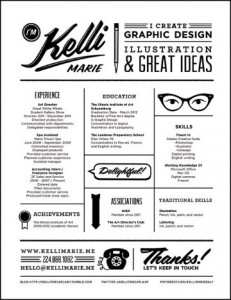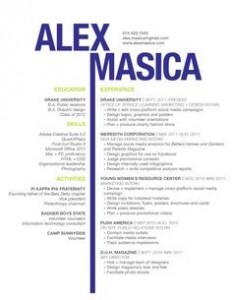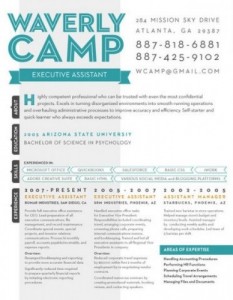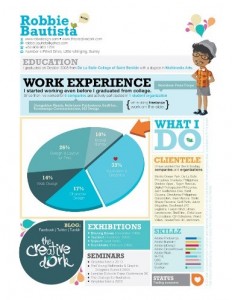6 Tips for Writing the Perfect Resume
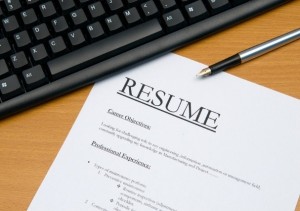 Writing a resume for the first time can be a daunting task. More often than not, young adults learn how to write a resume only after graduating from school and are consequently in need of employment. Luckily, there are many websites that provide free access to hundreds of resume templates, which can be both a good and bad thing. It certainly is helpful to have a polished outline guide you through the process as it displays your qualifications in a professional manner. However, deciding on what template works best for the position you’re applying for and one that helps distinguish you from the rest as a potential candidate can be quite the challenge. Here are a few tips to help you write the perfect resume for the job:
Writing a resume for the first time can be a daunting task. More often than not, young adults learn how to write a resume only after graduating from school and are consequently in need of employment. Luckily, there are many websites that provide free access to hundreds of resume templates, which can be both a good and bad thing. It certainly is helpful to have a polished outline guide you through the process as it displays your qualifications in a professional manner. However, deciding on what template works best for the position you’re applying for and one that helps distinguish you from the rest as a potential candidate can be quite the challenge. Here are a few tips to help you write the perfect resume for the job:
Tip #1: Less is more– Believe it or not, there is such a thing as too much information on a resume. When searching through templates, avoid the ones that provide too many categories or is overly designed. The truth of the matter is that employers are not interested in seeing your picture, learning about your favorite hobbies, or knowing what clubs you participated in while attending school. Similarly, a resume with bold colors, a variety of fonts, or distracting images can deter an employer from reading it and taking the candidate seriously. What they quickly want to know is- do you possess the necessary skills to adequately do the job? That is why your work experience, related skills, and education are the most important information to provide and emphasize on your resume. All else is just extra.
Extra-Tip: If you have additional information that relates to the position you are applying for, such as business accomplishments, professional recognition, or awards, you can and often should include them in your resume to showcase your success in your line of work.
Tip #2: Match the resume with the job– If you apply for a job, it should be because you qualify for that position. Therefore, you should make your qualifications work in your favor by presenting them strategically. One way of doing this is by providing a precise one to two sentence objective at the top of your resume that asserts your long-term goal as an employee of that company should you land the job. Alternatively, you can provide a short summary of three to five bullet points that highlight your best attributes as an employee, such as skills and personality traits that will contribute to your work performance in that particular field. Both openers can be highly effective when written correctly; therefore, make sure you take sufficient time to revise and edit your writing before moving on to the rest of your resume.
Extra-Tip: Professional writers often wait until the body of their work is complete before composing their title or introduction. Likewise, you might find it useful to work on your experiences and education first before writing an objective. That way it’ll be easier to draft an introduction that sums up your resume as a whole. Think first impression!
Tip #3: Stand out, when appropriate– Keeping the rules of the first tip in mind, realize when and how to personalize your resume to match the job and your individuality through template design. For example, consider using a template that illustrates (in a professional manner) the field of work in which you are applying for using images, fonts, and color. Note: Creative templates are usually appropriate for artistic positions, such as web designing, business advertisement, social media, blogging, or professional artist- to name a few. However, with so many templates available, you should be able to create a resume that showcases your creative talent without compromising your professionalism.
Extra-Tip: Times New Roman and Arial remain the professional fonts to use in a resume or cover letter, with a 12 point font size text for most of the content provided in the document.
Below are some examples of stand out resumes that match the job:
Tip #4: List everything from most recent to least recent & most important to least important– For the most part, you should only provide work experiences that relate to the position you are applying for, unless you’ve only worked in a few places and like to show your active years of employment. Make sure to always present your work experience from the most recent place of employment to your last place of employment. Underneath each position, provide descriptive bullet points in the order of most important to least important roles, tasks, and responsibilities.
Extra-Tip: As a general rule of thumb, you shouldn’t go past the ten year mark when presenting your work experience. Therefore, really take the time to highlight your skills and accomplishments of the last ten years.
Tip #5: Use strong action verbs– When using bullet points to describe a previous position, always start your sentences with strong action verbs. Keep in mind that bullet points are exactly that- points, or brief details that describe your responsibilities in that position; therefore, stick to one to two sentences for each bullet point and refrain from writing paragraphs. Here are a few examples of strong action verbs that can replace the commonly overused verb wrote: composed, drafted, created, or developed.
Extra-Tip: To avoid repetition, keep a thesaurus handy, but make sure not to use words that you or most individuals are not familiar with or wouldn’t commonly use in a formal conversation.
Tip #6: Be prepared– Once you’ve completed your resume and have corrected all spelling and grammatical errors, be certain that all of the information you provided on your resume is accurate and up to date. Moreover, you should be prepared for an employer to verify the information and/or contact past supervisors, so make sure to have three to five references available and informed before you attend an interview. Lastly, do your homework by learning about the company you want to work for to truly demonstrate your interest in the position and to assure that it is indeed a good fit for you.
Extra-Tip: Don’t know where to start? Hloom.com is one of many sites that provide free resume templates, cover letters, and samples.
What are some additional tips you find useful when creating a resume? Any do’s and don’ts you’d like to share? Let’s discuss!
* * *
Stay tuned for…
[Preparing a Cover Letter]

